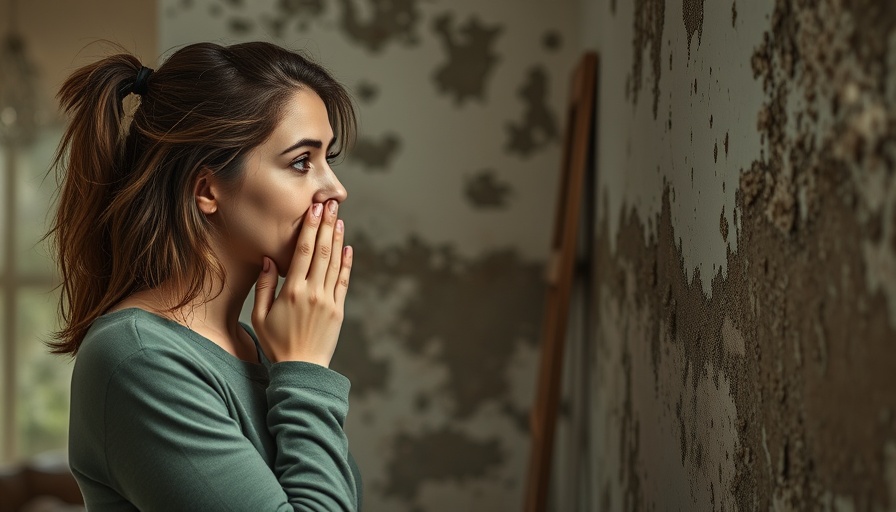
Understanding the Risks of Buying a House with Mold
As potential homebuyers explore the properties available in real estate listings such as Redfin, the presence of mold can often become a significant roadblock. Buying a house with mold isn’t just about aesthetics; it involves serious considerations related to health risks, potential structural damage, and future costs. Mold thrives in damp environments, indicating a potential moisture problem that could undermine the integrity of the home. Moreover, mold-related health issues can range from simple respiratory irritations to serious allergic responses. Thus, the stakes are high when contemplating such a purchase.
Negotiating Power: Strategies for Buyers
For buyers willing to navigate the implications of mold, opportunities arise within negotiations. If you identify mold during a property inspection, consider it a bargaining chip. The costs associated with mold remediation can be substantial, so this discovery might justify a price reduction. Engaging a Zillow or Trulia real estate agent can be invaluable in formulating a strategy for negotiations and ensuring that you’re aware of all your options. Depending on the extent of the mold issue, if handled creatively, you could end up with a deal that provides significant value.
Identifying Mold and Assessing Its Severity
Identifying mold can sometimes be straightforward, particularly when visible patches dot walls or ceilings. However, less obvious signs such as musty odors or moisture stains may indicate hidden mold issues. Acquiring the services of a professional mold inspector can provide critical insights into the mold's type and extent, helping buyers determine a course of action. Understanding the nature of the mold can influence your decision; for instance, certain types may be easier or more cost-effective to remediate than others.
Future Prevention: How to Avoid Mold Growth
Preventing mold growth is a fundamental step for any homeowner, particularly for those considering a purchase with a mold history. Simple strategies can be instrumental: controlling humidity levels, ensuring proper ventilation, and promptly addressing leaks are all practices that can thwart mold regrowth. Implementing these measures not only safeguards health but also preserves the property’s long-term value, making it essential knowledge for new homeowners in the real estate market.
Real Estate Perspective: A Market Overview
The real estate market is dynamic, with trends continuously evolving. According to current market analyses, homes listed with a history of mold can sometimes be found at a discount, appealing to buyers who are financially savvy and willing to manage the risks involved. Additionally, as consumers become more informed about property conditions via real estate websites, the transparency surrounding issues such as mold is likely to increase. From both a financial and a cautionary perspective, understanding mold's impact on homes aligns with larger trends that inform real estate purchases and investment opportunities.
Conclusion: Making Informed Decisions
In summary, while the prospect of buying a house with mold can induce unease, armed with the right knowledge and resources, buyers do not need to shy away from such opportunities. Careful assessment, strategic negotiation, and preventative measures can transform potential pitfalls into profitable investments. So, if you’re eyeing a property that captures your heart but has a mold issue, remember that it may not simply be a dealbreaker but rather a chance for negotiation and future value improvement.
Take Action: Don’t let mold deter you from your dream home! Engage with a qualified real estate agent and inspect properties thoroughly to assess risks and negotiate effectively. Your future home might be waiting for you.
 Add Row
Add Row  Add
Add 




Write A Comment